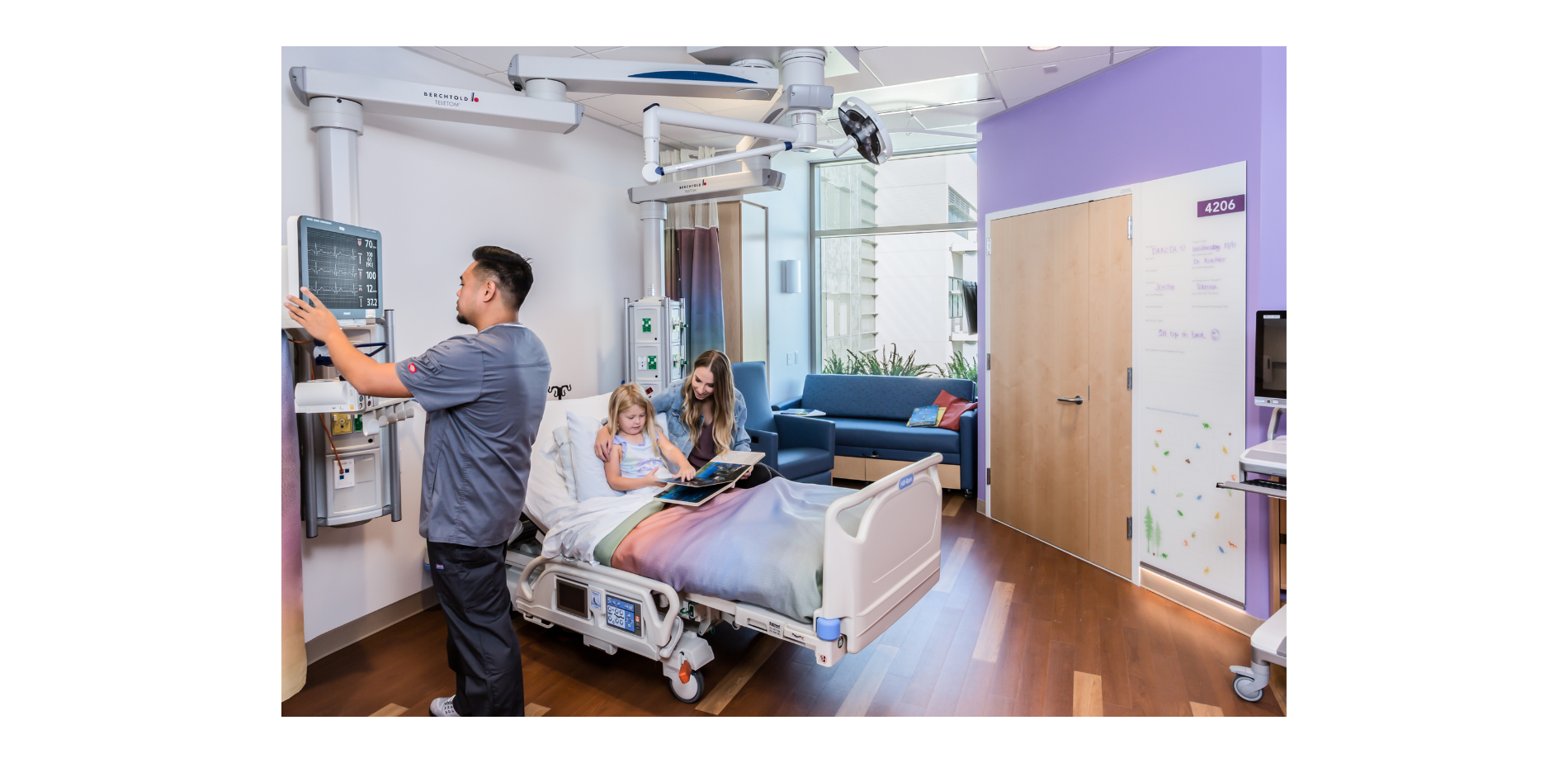Making the Path of Egress the Path of Least Resistance in Healthcare Facilities
A consultant shares the lessons they learned after informing an architect that their newly designed hospital would require an ...

Nick Tournis, PMP and additional team members contributed to this article.
Healthcare technology consultants play a fundamental role in ensuring successful transitions between project phases. Daring to test the limits of what traditional firms offer, our experienced consultants use tried and true tactics paired with an empathetic approach to achieve project results that exceed client expectations.
In the final blog post of this series, we will focus on how empathy-based practices and processes position teams to design exemplary hospitals for patients, staff, and visitors. While helping teams maintain a holistic and realistic approach, our consultants utilize time-tested techniques that will give clients a big-picture perspective and prepare them for transitioning into the design phase of the project.
At this stage of the programming or planning phase in a healthcare project journey, our team of consultants has established an empathetic and open-minded culture, helped develop a strong project roadmap, and worked with the client to develop a clever and compassionate team that is ready for the next phase of the project: design! As exciting as it may be to dive in head first with ideas for advanced technology solutions, accessible room designs, and ways to improve workflows - there are vital practices that need to be conducted.
Knowing what tasks each team member is responsible for is imperative to the success of any project. With so many moving parts and multiple stakeholders and teams involved, healthcare projects rely on a responsibilities matrix to ensure effective collaboration and project management.
Using a united and supportive approach, our consultants work with clients to clearly identify and assign roles and responsibilities to all team members involved in the project. While completing the matrix, the team uses this exercise as an opportunity to discuss key decision-making milestones such as specification planning, procurement, and vendor contracts. By involving all relevant stakeholders in the process, our goal is to have the matrix become a contract document that will ultimately prevent confusion, potential overlaps or gaps, and clarify the project timeline.
Once the matrix is created, project team members can refer to the file to see their responsibilities as well as those of other project team members. The full transparency that the matrix has created proves especially valuable in fostering strong communication, enhancing accountability, and facilitating the successful completion of the project.
While a detailed and complex responsibilities matrix requires a great deal of time, energy, and attention, our team has found that this practice always results in a smoother project journey and helps the healthcare team navigate their approach to working in the newly designed facility.

With a detailed and organized responsibilities matrix in place and a day-in-the-life exercise completed, everyone on the team now has a thorough understanding of the project’s scope and process. This next phase of the project, design ideation, is where our team’s holistic and empathetic approaches come full circle. Weaving together the strong foundation we have built and the work we have done so far - our consultants can now bring the team’s ideas, wants, and needs for the new facility to life.

When designing any healthcare project, we continuously emphasize the importance of building a hospital for the future. After the first wave of the COVID-19 pandemic, we, alongside our healthcare clients, have seen the crucial importance of designing with flexibility. Using input from everyone on the project team to design for acuity-adaptable care can often lead to better patient outcomes, improved workflows, and quicker response times. Design choices like hybrid units that can quickly convert from Acute Care to Intensive Care or viewing Real Time Location Systems (RTLS) as a utility for multiple departments to gather and use data are forward-thinking tactics that will allow a new facility to handle larger-scale scenarios that may arise in the future.
Understanding that our clients seek proven solutions, we ensure that they make selections that are tried, true, tested, effective, and most importantly, supported by the facility’s infrastructure. Working as a team, we can ensure that we design a hospital for the future that is smart, flexible, realistic, and focused on patient-centered care.
By deeply understanding the complexities of healthcare teams and prioritizing genuine teamwork, our team provides holistic strategies, thoughtful technology decisions, stakeholder alignment, and forward-thinking designs. Utilizing empathy, practicality, and collaboration, our consultants combine human-centric strategies with proven tools and methodologies to ensure that teams meet their end goal: to open a facility that better serves patients, staff, and visitors.
We believe that designing world-class healthcare facilities is more than just a job; it's a passionate pursuit. Our commitment to enhancing healthcare environments goes beyond technical drawings and BIM models. It's rooted in a desire to positively impact lives and to lay the foundation for a better, more efficient, and compassionate healthcare experience for all.
Let's redefine the future of patient-centered care, together - contact us today!
Stay ahead of the curve with our latest blog posts on industry trends, thought leadership, employee stories, and expert insights.